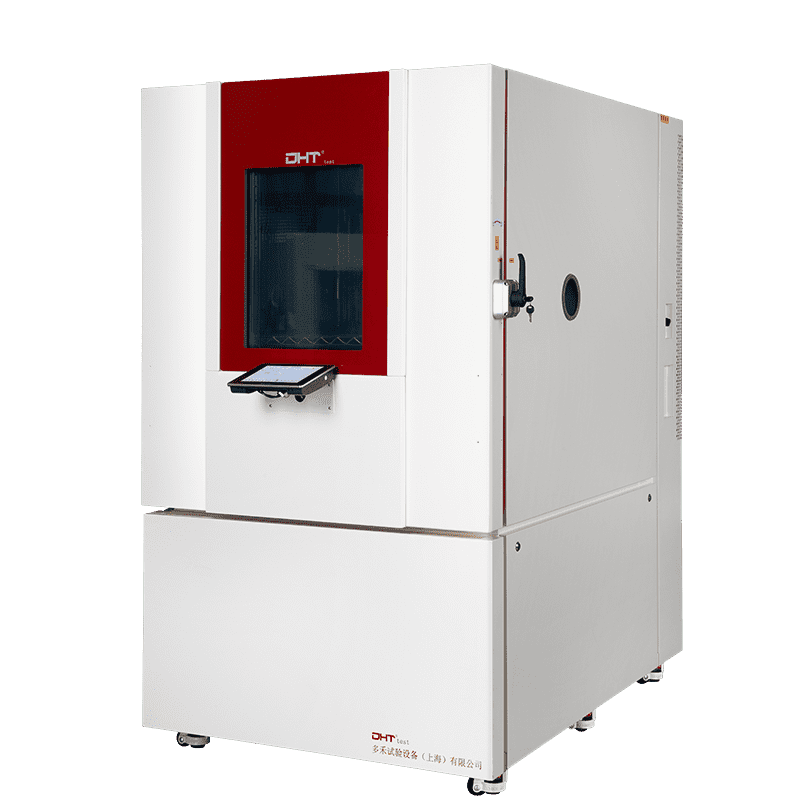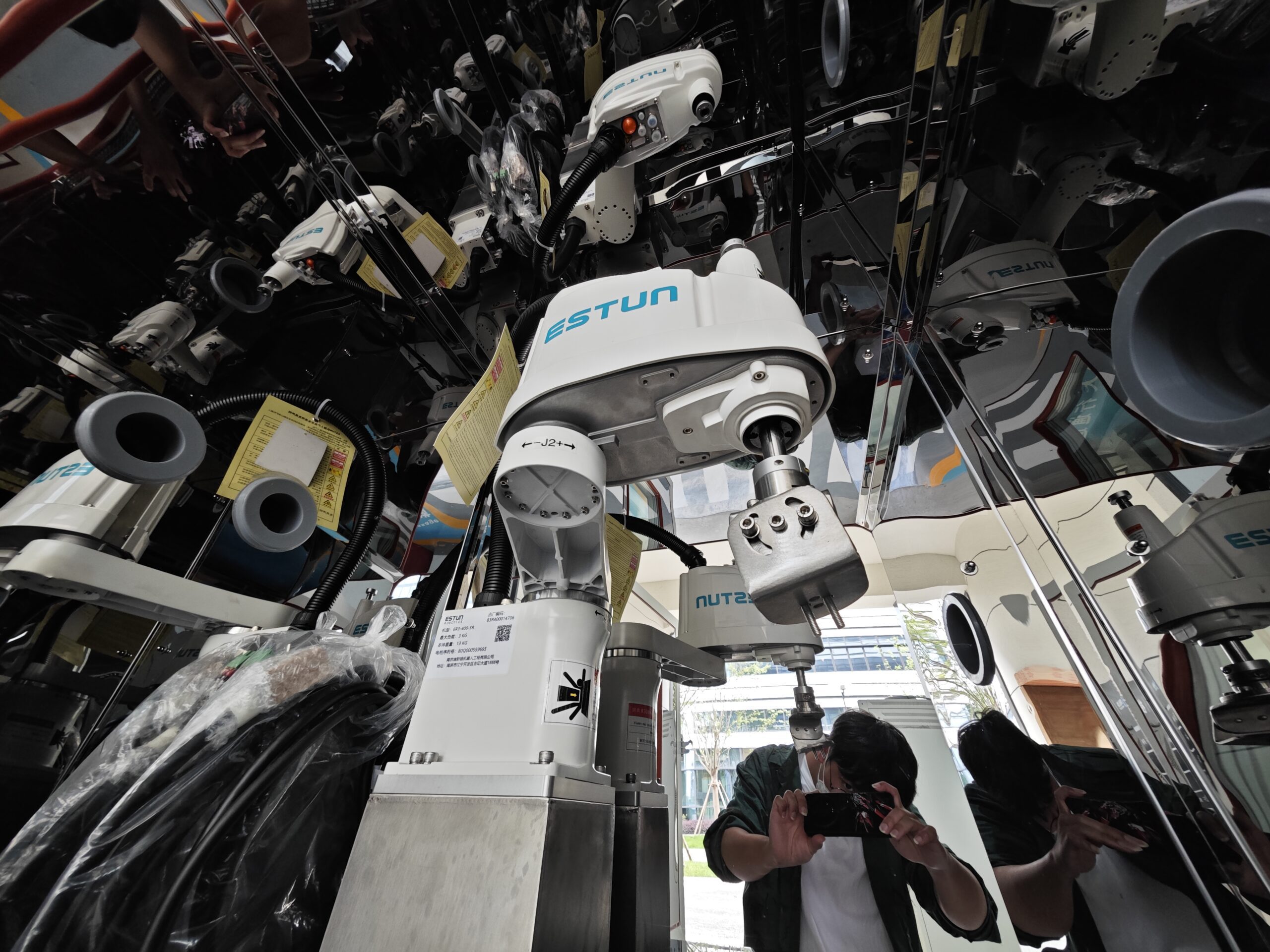In der modernen industriellen Produktentwicklung und -validierung ist das Umweltanpassungstesten zu einem kritischen Schritt geworden, um die Produktqualität und -zuverlässigkeit sicherzustellen. Dies ist besonders wichtig für Branchen wie Luft- und Raumfahrt, Automobil, Verteidigung und Elektronik, bei denen Produkte häufig komplexen und dynamischen Außenumgebungen ausgesetzt sind. Unter diesen Umweltfaktoren spielt die Sonnenstrahlung eine entscheidende Rolle bei der Beeinflussung von Materialeigenschaften und Produktleistung.
Um reale Sonneneinstrahlung zu replizieren und die Widerstandsfähigkeit eines Produkts gegenüber Sonnenlicht zu bewerten, wurde die Sonneneinstrahlungs-Testkammer entwickelt. Dieser Artikel untersucht die Arbeitsprinzipien, Hauptkomponenten, Anwendungsszenarien und wesentliche Testfunktionen dieser Kammern und bietet Ingenieuren, Labortechnikern und Einkaufsentscheidern ein umfassendes Verständnis von Sonnenstrahlentests und solaren Klimatestmethoden.
Eine Sonneneinstrahlungs-Testkammer ist ein hochpräzises Umweltsimulationssystem, das entwickelt wurde, um das vollständige Sonnenspektrum und die Strahlungsintensität nachzubilden. Mithilfe künstlicher Lichtquellen wie Xenonbogenlampen oder Metallhalogenlampen erzeugen diese Kammern Wellenlängen, die von ultraviolett über sichtbares Licht bis hin zu Infrarot reichen und die natürliche Sonneneinstrahlung genau nachahmen.
Im Gegensatz zu traditionellen Temperature- oder Feuchtigkeitskammern konzentriert sich eine Sonneneinstrahlungs-Testkammer speziell auf thermische Strahlung, Foto-Alterung, UV-Abbau und Oberflächentemperaturanstieg. Es ist ein spezialisiertes Werkzeug, das bei der Durchführung von solaren Klimatests essentiell ist.
Kernarbeitsprinzipien und Aufbau
Künstliches Lichtquellensystem
Das Herz einer Sonneneinstrahlungs-Testkammer ist ihr stabiles und genaues Lichtgenerierungssystem, das typischerweise beinhaltet:
-
Xenonbogenlampen: Simulieren das vollständige Sonnenspektrum; häufig verwendet in Automobil-, Luft- und Raumfahrtbeschichtungs- und Baumaterialtests.
-
Metallhalogenlampen: Besonders geeignet für beschleunigte UV-A- und UV-B-Alterungstests.
-
Infrarot-Heizungseinheiten: Ergänzen die thermische Lastsimulation und gewährleisten eine realistische Wärme-Strahlungskopplung.
In Kombination mit optischen Filtern und Bestrahlungssteuerungsmodulen ermöglicht das System eine präzise Anpassung der Lichtintensität und Wellenlängenbänder, um Sonnenbedingungen in verschiedenen Klimazonen und Geografien zu replizieren.
Temperatur- und Feuchtigkeitsregelsystem
Fortschrittliche Sonneneinstrahlungs-Testkammern sind mit unabhängigen Temperatur- und Feuchtigkeitsregelungen ausgestattet. Typische Testbereiche reichen von -40°C bis +120°C und 10%RH bis 98%RH und unterstützen komplexe Licht-Temperatur-Feuchtigkeits-Kombinationstests. Dies ermöglicht eine gründliche Simulation realer Außenumgebungen.
Bestrahlungs- und Spektralüberwachung
Ausgestattet mit hochpräzisen Bestrahlungssensoren und Spektralüberwachungsmodulen bieten diese Kammern Echtzeitdaten zur Lichtintensität (gemessen in W/m²) und Spektralen Zusammensetzung. Dies stellt sicher, dass jeder Testzyklus stabil, reproduzierbar und mit strengen Standards wie MIL-STD-810, IEC 60068-2-5 und SAE J1960 übereinstimmend ist.
Wichtige Anwendungsbereiche: Für mehrere Branchen maßgeschneidert
Luft- und Raumfahrt
Raumfahrzeuge und Satellitenausbaumaterialien müssen intensive und langanhaltende Sonnenstrahlung überstehen. Sonneneinstrahlungstests validieren die thermische Stabilität und UV-Beständigkeit von mehrschichtiger Isolierung, optischen Komponenten und Avionikmodulen, die den Bedingungen im Weltraum ausgesetzt sind.
Automobil und Transport
Fahrzeugkomponenten wie Armaturenbretter, Scheinwerfer und Innenverkleidungen sind anfällig für sonnenbedingtes Verblassen, Reißen und Verformungen. Sonneneinstrahlungskammern simulieren Sonnenlicht aus verschiedenen Breitengraden und Jahreszeiten, um zu bewerten:
-
Die Licht- und thermische Alterung von Innenmaterialien;
-
Die Betriebsstabilität von Fahrzeugelektronik unter Sonnenlast;
-
Die Lesbarkeit und Haltbarkeit von In-Vehicle-Displaysystemen.
Baumaterialien und Beschichtungen
Baumaterialien wie Architekturglas, Beschichtungen und Plastikelemente können unter längerer Sonneneinstrahlung abbauen. Simulierte Sonnenlichttests helfen, Produktlebensdauern vorherzusagen, Wetterbeständigkeit zu bewerten und Industrienormung zu unterstützen.
Verteidigung und Militär
Militärelektronik, Kommunikationsgeräte und tragbare Energiesysteme werden häufig in extrem sonnenbestrahlten Umgebungen wie Wüsten und großen Höhen eingesetzt. Sonneneinstrahlungskammern sind essentiell, um die Zuverlässigkeit von missionskritischen Systemen unter Sonnenwärmelasten zu bewerten.
Haupttestfähigkeiten erklärt
Einstellbare Bestrahlungsstufen
Testsysteme können konfiguriert werden, um Bestrahlung von 200 W/m² bis 1200 W/m² zu liefern und globale Sonnenlichtbedingungen von gemäßigten Zonen bis tropischen Regionen nachzubilden und sowohl standardisierte als auch angepasste Testprotokolle zu unterstützen.
Licht-Thermal-Kopplung
Durch Synchronisierung der Lichtintensität mit der Kammertemperatur ermöglichen diese Kammern multifaktoriale Umweltsimulationen—entscheidend für die Zuverlässigkeitstests von Elektronik, Studien zu thermischer Ermüdung und Produktqualifizierung.
Langzeitstabilität
Kammern sind für kontinuierlichen Betrieb über 72 Stunden oder mehr ausgelegt, wobei Bestrahlungsschwankungen innerhalb von ±% gehalten werden, um konsistente und wissenschaftlich gültige Ergebnisse für beschleunigte Alterungs- und Wetterbeständigkeitstests zu gewährleisten.
Intelligente Steuerung und Datenmanagement
Mit integrierten SPS-Steuerungen und ferngesteuerten Überwachungsplattformen können Benutzer den Testprozess visualisieren, Daten exportieren und detaillierte cloudbasierte Aufzeichnungen führen. Dies unterstützt effizient die Laborbetrieb und die Einhaltung gesetzlicher Vorschriften.
Warum DHT® Sonneneinstrahlungs-Testkammern wählen?
Als professionelle Marke, die auf Umweltsimulationssysteme spezialisiert ist, hat DHT® über ein Jahrzehnt Erfahrung in der Sonnenstrahlungstechnologie angesammelt. Unsere Sonneneinstrahlungs-Testkammer-Serie vereint fortschrittliche europäische Ingenieurtechnik mit lokalisierter Fertigungseffizienz, um zu liefern:
-
Modularer Aufbau für maßgeschneiderte Lösungen;
-
Übereinstimmung mit IEC, MIL, GJB und anderen globalen Standards;
-
Integrierte Umweltsimulation (Licht, Temperatur, Feuchtigkeit);
-
Expertenunterstützung bei der Gestaltung von Testplänen, der Auswahl von Standards und Schulung nach dem Verkauf.
Schlussfolgerung
Das Sonnenstrahlungstestkammer ist mehr als nur ein Werkzeug für Sonnenstrahlungstests - sie ist ein entscheidender Unterstützer für die Verbesserung der Materialentwicklung, Gewährleistung der Produktbeständigkeit und Beschleunigung der F&E-Zyklen. Da sich die Sonnensimulation und das solaire Klimatesten weiterentwickeln, wird es wesentlich, eine zuverlässige, präzise und leistungsstarke Kammer zu wählen.
DHT®. ist verpflichtet, erstklassige Umweltprüflösungen mit hoher Leistung, langfristiger Stabilität und Kosteneffizienz zu liefern—ermächtigung der globalen Forschung und Fertigung mit präzisionsgefertigten Simulationssystemen.
Häufig gestellte Fragen
What can be tested in a Solar Radiation Test Chamber, and which industries benefit most from it?
Solar Radiation Test Chambers are widely used to test materials and components across aerospace, automotive, defense, and building materials industries. Items such as spacecraft insulation, car dashboards, electronic modules, architectural coatings, and military-grade devices are tested for their UV resistance, thermal durability, and weatherability under simulated sunlight exposure.
How does a Solar Radiation Test Chamber simulate real sunlight and ensure accurate results?
These chambers use xenon arc or metal halide lamps, optical filters, and irradiance control systems to mimic the full solar spectrum (UV to NIR). They feature precise irradiance (200–1200 W/m²), temperature-humidity control, and real-time spectral monitoring, ensuring compliance with standards like MIL-STD-810 and IEC 60068-2-5. The light-thermal coupling capability allows more realistic and comprehensive environmental simulations.
Why choose DHT® Solar Radiation Test Chambers over other brands?
DHT® offers chambers with modular customization, compliance with global standards (IEC, MIL, GJB), and integrated light-temp-humidity simulation. Backed by over a decade of expertise, the company supports clients with test planning, standard interpretation, and after-sales training, combining European-level engineering with localized manufacturing and cost-efficiency.


